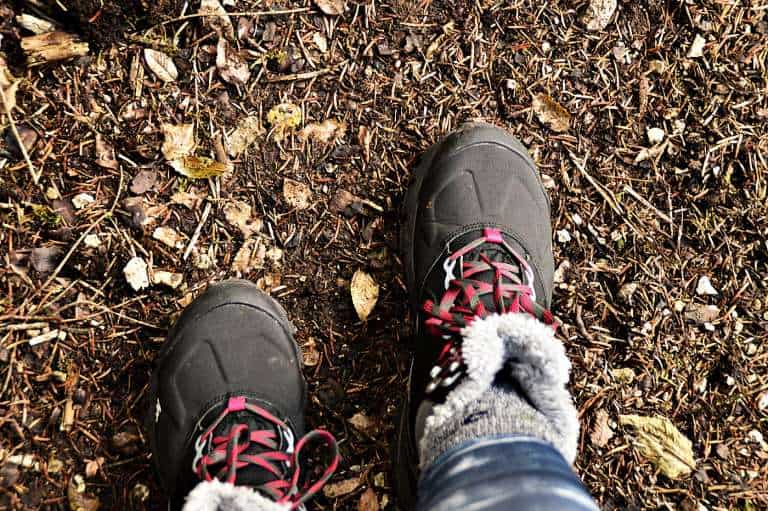Our leather walking boots (or hiking boots if you prefer) need maintenance so we can enjoy them better and for as much time as possible.
During the Autumn and Winter months, our hiking boots are put through rugged hikes and trails.
There are mud and rain, rough terrain, and various weather conditions along the trails.
We think leather walking boots are manufactured to cope with such rough conditions.
That doesn’t mean it is ideal for throwing our muddy boots in a closet until the next time we want to use them.
Such action speeds up the deterioration of our boots.
Thoroughly cleaning our boots makes sure that they will accompany you for a more extended period.
Don’t forget to explore more posts from our hiking gear section, like Ultralight Backpacking Gear Basics, Best Trekking Poles for Men and Women, Best Hiking Leggings for Women, Best Hiking Gloves, and many more.
What happens with Uncleaned Leather Walking Boots?
Neglect to clean them and boots will get destroyed faster in many ways. Why? Here are a couple of reasons:
- Every time you walk, your boot bends. Tiny pieces of dirt, sand, mud, or small rocks sink in the leather of the boot, fabric, and its adjoined structural elements. Look closer and notice the series of scratches, like rubbing them with sandpaper.
- Mud initially moistens boots, but as it dries, it makes the skin dry too. Your boots become less flexible, and materials “break.”
- Sand and tiny rocks find their way into the seams and bindings of your boots, different layers, and materials. Each time you use your boots, these wear down all these layers through abrasion.
All the above sums up when you don’t clean your leather boots.
5 Highly Recommended Hiking Boots
Salomon Quest 4D 3 GTX
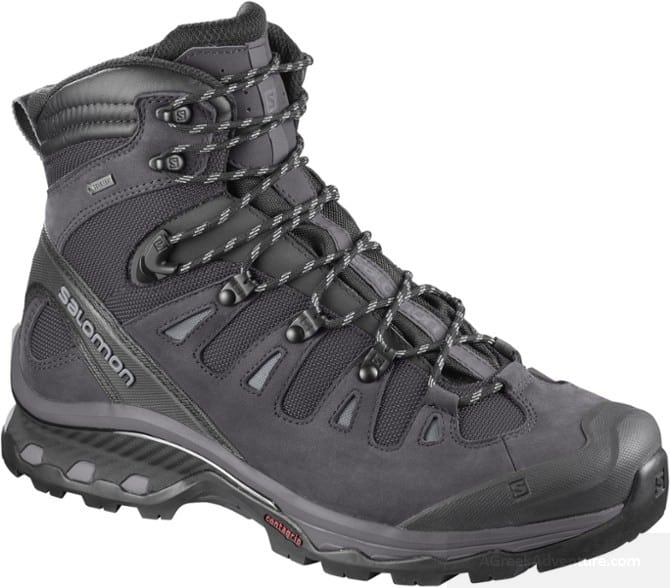
An over-the-ankle boot, made by Nubuck leather/textile, Gore-Tex waterproof & breathable, dual-density midsole (EVA), contact grip rubber outsole. It weighs 2 lbs. 13.2 oz.
Merrell Moab 2 Mid WP
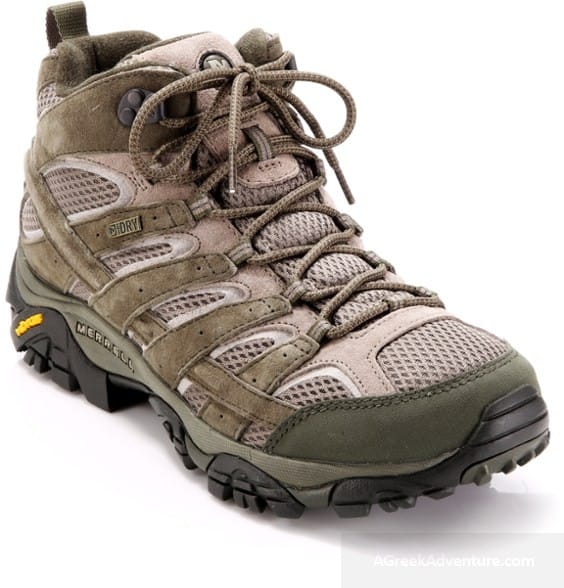
Over-the-ankle, Suede leather and mesh, waterproof and breathable membrane, EVA midsole, Vibram soles TC%+ rubber midsole. It weighs 2 lbs. 4 oz.
Lowa Renegade GTX Mid
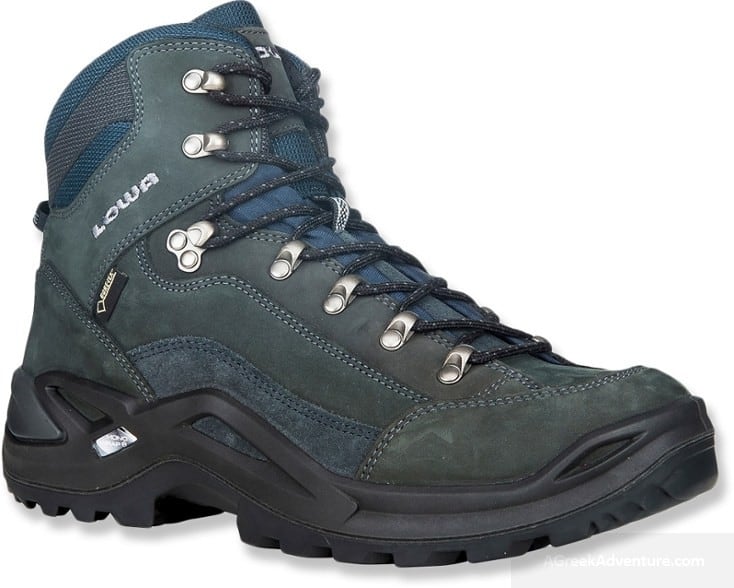
Over-the-ankle boots, made with Nubuck leather and Cordura nylon, Gore-Tex waterproof and breathable lining, and Vibram rubber outsole. It weighs 2lbs. 7 oz.
Lowa Renegade GTX Mid
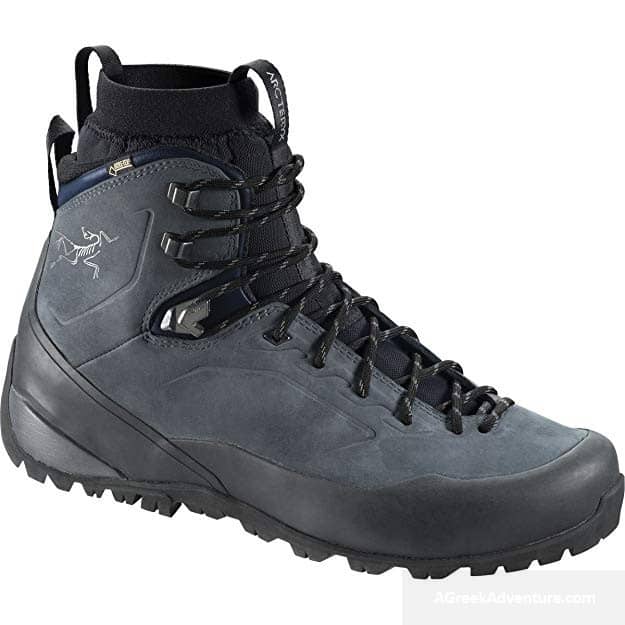
It is made with Nubuck leather, nylon, and EVA foam. Waterproof Gore-Tex membrane with EVA midsole. Weighs: 2lbs. 3 oz.
Columbia Newton Ridge Plus II WP

They are made with full leather and waterproof with Techlite lightweight midsole. It weighs 2 lbs. 0 oz.
What Cleaning Gear do you need for Leather Walking Boots?
Things are relatively simple with such gear. Mostly it would be best if you allocated the time for cleaning. You will need:
- A special brush for boots or an old toothbrush. Even a vegetable cleaning brush can do the work.
- Use a special boot cleaning liquid, leather-specific soap, or a light mixture of dishwashing soap and water.
Cleaning the Top of Leather Hiking Boots
Remove laces before cleaning your leather walking boots.
Use the brush to remove dust, dirt, or mud gently.
You can place the boot under running water while doing that. Then it is time for the detergent.
When using detergents:
- Most cleaning detergents can be used and applied to a wide range of materials, including leather. Double-check that the one you are about to use is suitable for cleaning your leather hiking boots, and follow the instructions.
- Do not use hand soap or detergent; not suitable for such boots.
- To clean mold away, you need a mixture of 80% water and 20% vinegar.
- Always wash your boots thoroughly with clean water after using detergents.
Do not place your boots in a washing machine. They will most probably get destroyed.
Do not place them next to extreme heat to dry up. Such can cause damage to your boots if weather permits; let them dry under the sun without any laces.
Otherwise, place them near a heat source but (as said) not too close.
The danger of Saltwater
Last but essential is saltwater.
This applies to all kinds of hiking boots.
When you walk through saltwater, it is important to rinse your boots with non-salty water (or better to clean them thoroughly) as soon as possible.
Salt corrodes materials, and water allows it to get deep into stuff.
How to Waterproof your Leather Hiking Boots?
If you plan to waterproof your boots, do it while they are still wet (but not soaked).
Most good boots are waterproof, so you don’t need to add extra coating.
However, it is time for that waterproof coating when water drops don’t roll away from the boot’s surface but sink in.
Usually, all methods for waterproofing and maintenance are related to boots made from leather or ones made from suede and nubuck “hard” leather.
Just read all waterproof instructions twice before applying any coating.
Boots with Gore-Tex or any other membrane type don’t need extra coating. For such boots, follow the thorough cleaning process.
Some tips:
- If your boots are not moist enough, then wrap them in a wet towel and leave them in your bathtub for a few hours.
- Apply the coating after that.
- To dry your boots, do not use an extreme heat device or place (radiator, stove, fireplace, etc.). Let them gradually dry at room temperature or better (if weather permits) under the sun if atmospheric humidity is low.
- If you need to speed up the process, use a fan or a hairdryer (not in high temperatures and from a distance).
How to Clean the Outer Sole of Leather Walking Boots?
Dirt and mud won’t destroy your boots’ outer soles, but cleaning them up allows your boots to have better adhesion against the ground.
Brush dirt away and remove any small rocks that are jammed there.
If dirt or mud has become hard and difficult to remove with the brush, soak soles first and use water with pressure to remove the dirt.
Do not dry the soles next to intense heat.
How to Store your Leather Walking Boots?
You may be surprised, but storage contributes primarily to your boots’ life expectancy!
Make sure to:
- Remove the inner soles and let them dry separately.
- Fill the boot with newspapers to keep their shape when stored for a long.
- Store them in a place with no atmospheric humidity, and the temperature remains relatively steady. Avoid storing them in garages, car trunks, attics, or any other moist, very warm, or with reduced ventilation.
Use this Foot Fitter to make boots fit well when you store them.
Especially for leather boots, remember that leather is something that is “alive” as a material.
On top of that, all kinds of rubber, seams, and synthetic materials don’t react well when mistreated under extreme conditions changes (i.e., from extreme cold to intense heat, etc.).
They tend to “break down” and thus gradually deteriorate.
Treat them well for safety and enjoy them longer.
Have fun and read Best Travel Shoes For Europe and Best Hiking Boots for Wide Feet.
